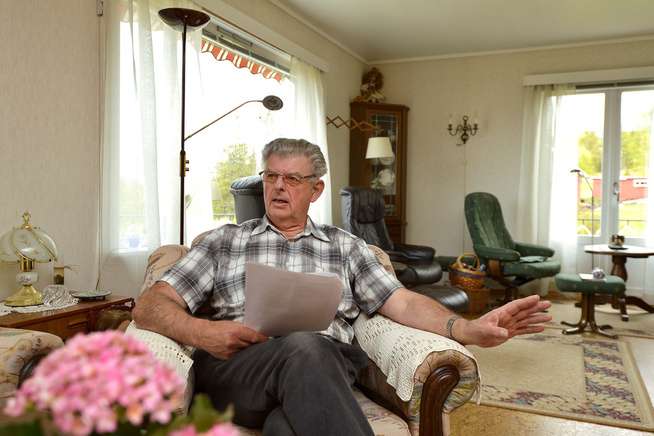I’ve heard from several readers in Finland that a split is possible among the
esikoislestadiolaiset in Finland, the Laestadians who call themselves Firstborn or Old Apostolic Lutheran here in North America. (For simplicity’s sake, I’ll refer to them as the Firstborn in this post).
The controversy stems from a recent directive from the Firstborn elders in Swedish Lapland to take the sacraments “into your own hands," in essence to separate from the state Lutheran church. It is my understanding that this would result in the loss of church facilities and other resources (as well as responsibilities, such as fees that fund charitable work) and the gain of full autonomy to perform the holy sacraments (communion, baptisms, confirmations, weddings)
however and by
whomever they choose. Naturally, this goes against church law and possibly against Lutheran doctrine (although the Lutheran church in Sweden and Norway don't seem to object). However, it is not the least surprising to this American, who grew up listening to Firstborn preachers rail against the "dead faith" of the state church in the Motherland.
For those who read Finnish, there is a lot of information about the controversy, and many links to documents, over at this
site.
This
news report says a split would result in 10,000 leaving the Church, but there is a significant faction of Firstborn who disagree with their elders. At least one community has rejected the missionaries assigned to them at a January "preacher's meeting," opting for preachers of their own preference. Some communities have even (gasp!) "uninvited" the Swedish elders who will be visiting Finland this summer. That is some serious insubordinance.
“There are a lot of us that do not take the advice from elders in Gällivare as the word of God, even though we are taught to obey, and that disobedience is against God and the Holy Spirit," explains a member who has decided to stay in the Church.
“It is essential to note that in Finland, the legal and social situation is significantly different than in North America, Norway and Sweden. Esikoislestadiolaiset associations’ local branches are autonomous.”
(Update: this was apparently a mistranslation or misunderstanding. Please refer to the linked document and comments below.)
Not long ago in America, Laestadian immigrants relied on ordained Lutheran clergy (although other denominations would do in a pinch) until their lay preachers were granted the right to perform the sacraments under the laws governing that locality. My grandparents were married by a Presbyterian minister and my parents by a Justice of the Peace. Nowadays, of course, Firstborn lay preachers, all male, none with divinity degrees, are large and in charge.
I suspect the ordination of women priests by the Finnish Church was very challenging to Finnish Laestadians (there are stories of Firstborn refusing to take the sacraments from women), but it was the
legalization of same sex marriage in 2014, a move celebrated by the Archbishop, which galvanized some to leave. Finland was the last of the Nordic countries to legalize same sex marriage.
(Update: this theory is rejected in the comment section below.)
I asked a Finn what he thought the future would hold:
"It's impossible to know what the outcome will be, but I think this might be the moment when something that has been boiling under the surface since the 1990's will finally result in a split. It hasn't been this serious before, so many missionary preachers removed, and congregations refusing to receive missionary preachers sent by the Finnish preachers' meeting and to receive the elders of Swedish Lapland. It will be interesting if the liberal party will be able to remain united or if they will split into several groups over some other issues as soon as they get outside of the control of the 'elders.' And it's also possible that many people will start looking for a place to go in non-Laestadian groups or other Laestadian groups. Some people already have done it."
Some are even changing postal codes.
"We will soon move to a new community," writes one grieving member. "We are leaving the esikoislestadiolaiset, but not the Church. We have wonderful, Christian priests and I have never believed that only the esikoiset are real Christians."
One wonders what Laestadius would think. After all, he remained a priest within the Lutheran Church his entire life, a burr in its hide, corresponding with bishops, arguing doctrine, objecting to rebukes, but never leaving the umbrella of the Holy "catholic" Church. Nor did he advise his followers to leave.
What do you think?
(Please use a nickname when commenting so we can track the thread. Kiitos.)








